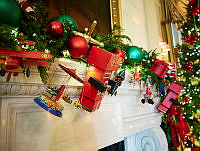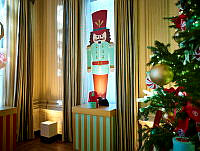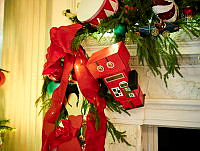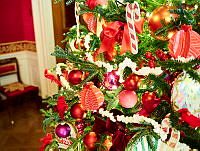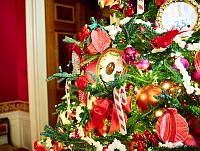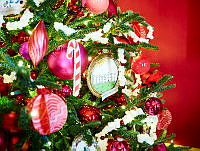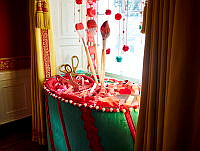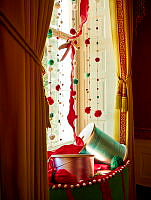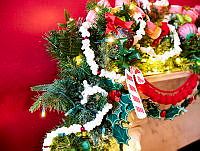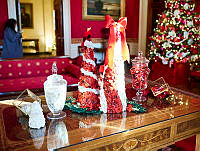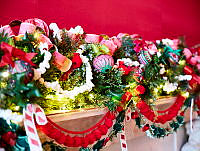Jacqueline Kennedy

Jacqueline Lee Bouvier was born on July 28, 1929, in Southampton, New York, to parents John and Janet Bouvier. She and her younger sister, Caroline, grew up in Manhattan. During her childhood, Jacqueline learned French, practiced ballet, and took horseback riding lessons.1
She enrolled at Vassar University in 1947 and studied abroad in Paris, France, before transferring to George Washington University, where she earned a degree in French literature in 1951.2 After college, Jacqueline worked as a photographer for the Washington Times Herald.
In 1952, she met up-and-coming Congressman John F. Kennedy, and the couple married on September 12, 1953. They divided their time between Washington, D.C. and Hyannis Port, Massachusetts, while raising their children Caroline and John F. Kennedy Jr. In the 1950s, Jacqueline supported John F. Kennedy’s political aspirations, which culminated in his election to the presidency in 1960.
In January 1961, the Kennedys moved into the White House. Despite her short time there, Jacqueline Kennedy made a profound impact on the home and the role of first lady. She immediately set her sights on preserving the historic integrity of the White House. In 1961, she created the Fine Arts Committee for the White House, made up of specialists in the field, and hired Lorraine Waxman Pearce as the first curator of the White House. That same year, the first lady also established the White House Historical Association, a private, non-profit organization to assist with acquisition and preservation efforts. Kennedy spearheaded efforts to make the White House a museum, protected by Congress, and renovated many rooms. She expanded the White House Collection, searching for historic pieces from past administrations, and published the first White House Guidebook.
To share these efforts with the public, CBS News broadcast the first televised tour of the White House in 1962, led by the first lady. Over eighty million viewers around the world watched, and Mrs. Kennedy earned a special Emmy Award for the program.3 Jacqueline Kennedy also organized efforts to save Lafayette Park and its historic buildings from demolition, successfully preserving it for future generations.4
Despite her busy schedule, motherhood was Mrs. Kennedy’s priority, and she made several changes to make the White House more comfortable for her family. She set up a school room in the Third Floor Solarium for Caroline Kennedy’s kindergarten classmates and created a nursery for John Jr. in the Residence. Sadly, she and President Kennedy lost a child, Patrick, born prematurely in August 1963.
Her influence as first lady also stretched beyond the White House. Jacqueline Kennedy traveled abroad several times as first lady, visiting the countries of India, Pakistan, Venezuela, Italy, and the United Kingdom, among others.5 Following a trip to France in 1961, she successfully negotiated for Leonardo da Vinci’s Mona Lisa to travel to the United States, and millions of Americans visited the famous painting in Washington, D.C. and New York City in early 1963.6 Indeed, the Kennedy White House was a cultural center, and ballet, musical performances, opera, and theater filled its halls.
Tragically, the Kennedys’ time in the White House was cut short. On November 22, 1963, President Kennedy was assassinated while campaigning for re-election in Dallas, Texas. Mrs. Kennedy planned his State Funeral to imitate President Abraham Lincoln’s almost a century earlier.7
After leaving the White House, she moved with her children to New York City, and in 1968, Jacqueline married Greek businessman Aristotle Onassis. She only returned to the White House once more. She and her children secretly visited on February 3, 1971, to view the recently completed portraits of herself and President Kennedy at the invitation of President Richard Nixon and First Lady Pat Nixon.
Jacqueline participated in the creation of the John F. Kennedy Presidential Library and Museum in Boston, Massachusetts and attended the dedication ceremony on October 20, 1979. Following the death of her second husband, Jacqueline became an editor for Doubleday. She also continued to advocate for historic preservation, fighting to save Grand Central Station in New York City.8 She spent her final years with her long-time partner, Maurice Tempelsman. Jacqueline Kennedy Onassis died on May 19, 1994, at the age of sixty-four. She is buried next to President Kennedy in Arlington National Cemetery.
Footnotes & Resources
- “LIFE OF JACQUELINE B. KENNEDY,” John F. Kennedy Presidential Library and Museum, https://www.jfklibrary.org/lea....
- Ibid.
- “Jacqueline Kennedy’s Emmy Award,” John F. Kennedy Presidential Library and Museum, https://www.jfklibrary.org/med....
- “The “First Neighborhood”: Presidents and Preservation in Lafayette Park,” National Park Service, https://www.nps.gov/articles/l....
- “JACQUELINE KENNEDY IN THE WHITE HOUSE,” John F. Kennedy Presidential Library and Museum, https://www.jfklibrary.org/lea....
- See Margaret Leslie Davis, Mona Lisa in Camelot (Washington, D.C.: White House Historical Association).
- “John F. Kennedy Funeral,” White House Historical Association, https://www.whitehousehistory.....
- Angela Serratore, “The Preservation Battle of Grand Central,” Smithsonian Magazine, June 26, 2018, https://www.smithsonianmag.com....



















































